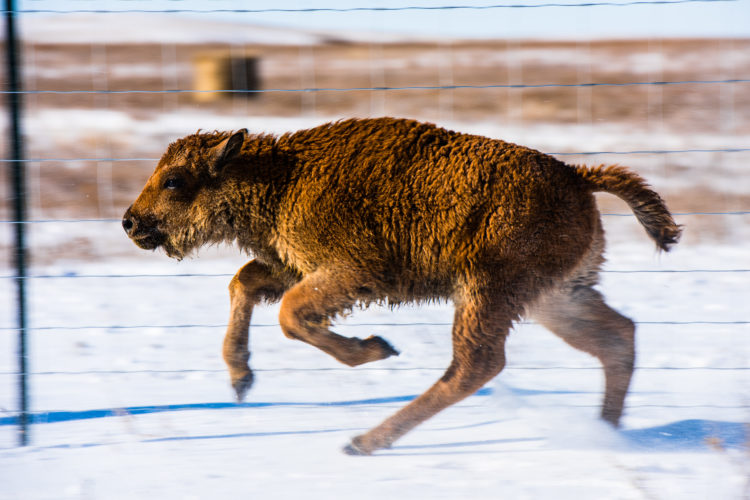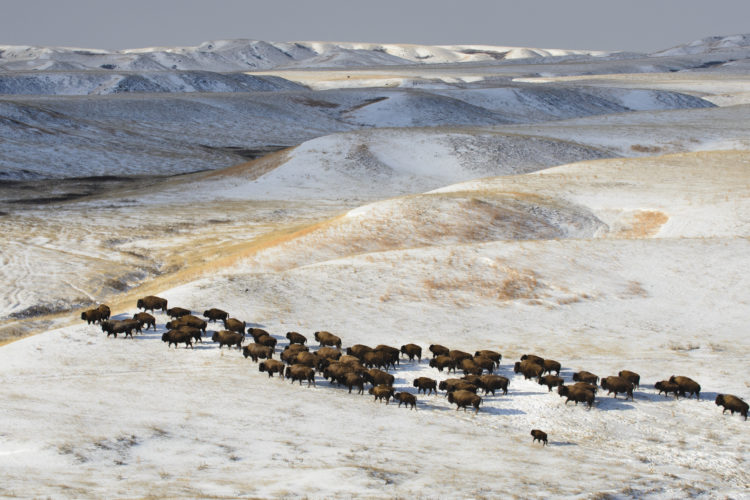We have much more to do and your continued support is needed now more than ever.
Yellowstone Offers Rebirth of Bison on Tribal Lands
Yellowstone National Park recently released an Environmental Assessment for a new quarantine option that would place buffalo on the Fort Peck Reservation in Northeastern Montana. Like previous relocations of buffalo to Fort Peck, the plan offers significant, new opportunities for bison restoration.
A little over one year ago, I watched in awe as 138 Yellowstone bison were released onto the Fort Peck Reservation. This followed the release of 64 Yellowstone bison to Fort Peck in the spring of 2012, the first time wild Yellowstone bison were returned home to the tribes.
What caught my attention most was a bison calf, sentimentally named “Goldrunner” by my eight-year old son. Goldrunner caught my eye, heart, and imagination, as the calf did for all the people gathered there to see Goldrunner sprint free onto the prairies at Fort Peck. Many of us who work to conserve bison metaphorically speak of the “rebirth of bison” on the Plains, but metaphor became emphatic reality in the form of the golden calf dashing to his new home.

Why not deal with the challenges of over-population and migration by establishing a process to move healthy wild bison to new habitats? Why not have these exceptionally unique buffalo be the start to new herds, to return them to their historical place and connections to and among tribal communities?
Toward that practical end, we proposed the creation of a means to gather Yellowstone buffalo for relocation that came to be known as “quarantine.” It was a scientifically sound wildlife management proposal to certify buffalo as brucellosis-free and bring them back to their historic homelands rather than see them sent to slaughter. Ultimately, that idea led to the bison restoration at Fort Peck and other tribal lands. That idea continues to this day to hold the greatest promise for the rebirth of bison.

Despite all distractions and claims to the contrary, sometimes, things just make sense. It makes sense to bring buffalo to Fort Peck, then return them to other tribal and conservation herds across the West. Tell Yellowstone to make it happen.
Adopt a Wildlife Acre Adopt a wildlife acre now to help raise conservation funds for bison!





















